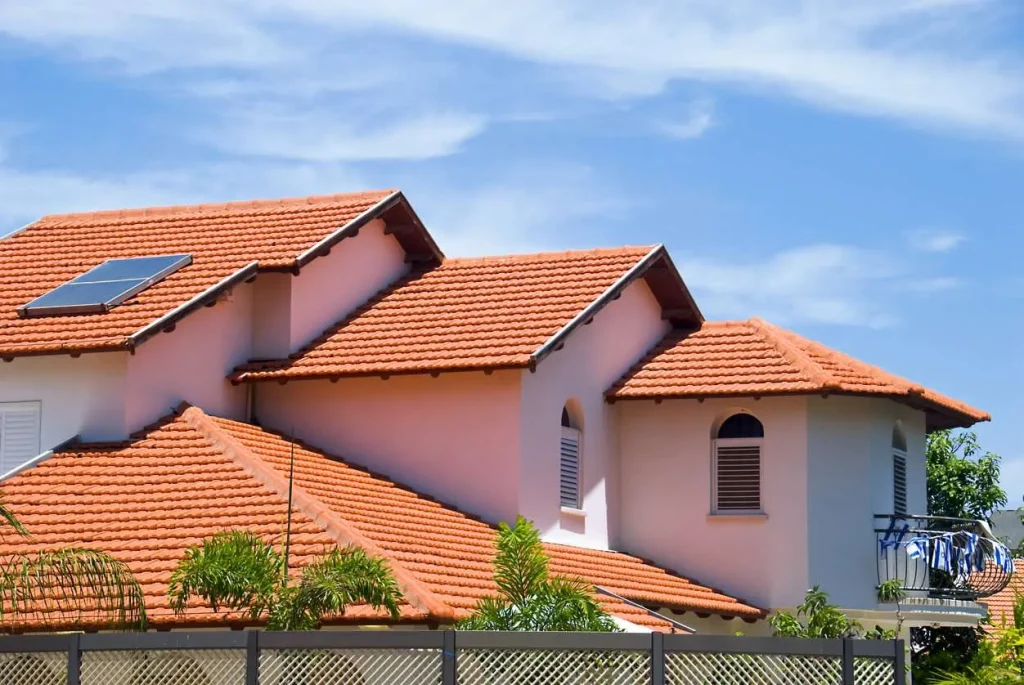In the arid and unique climate of Arizona, choosing the right type of roof for your home is crucial. The scorching sun, occasional monsoons, and temperature fluctuations demand roofs that are not only aesthetically pleasing but also practical and resilient. This article delves into the various types of roofs in Arizona that are well-suited for the desert landscape, providing insights into their features, benefits, and suitability for the region’s challenging weather conditions.

Flat Roofs: Embracing the Minimalist Aesthetic
Designs: The flat roof design is a popular choice in Arizona due to its modern and minimalist aesthetic. Flat roofs are characterized by their horizontal and level surface, creating clean lines that complement contemporary architecture. This design is particularly favored for its simplicity and suitability for the region’s climate.
Benefits of Flat Roofs: Flat roofs are known for their simplicity, ease of construction, and cost-effectiveness. They offer an unobstructed surface for solar panel installation, making them a sustainable choice for homeowners looking to harness solar energy.
Tile Roofs: Embracing Tradition and Durability
Tile Roof Designs: Tile roofs, often associated with Spanish and Mediterranean architectural styles, are a common sight in Arizona. These roofs are characterized by their distinctive curved tiles, which add a touch of elegance and sophistication to the home’s exterior.
Benefits of Tile Roofs: Renowned for their durability and longevity, tile roofs excel in the Arizona climate, utilizing the thermal properties of the tiles to regulate indoor temperatures. Additionally, tile roofs can withstand intense sunlight without fading or deteriorating.
Metal Roofs: A Modern Blend of Style and Functionality
Metal Roof Designs: Metal roofs are gaining popularity in Arizona due to their sleek appearance and practical features. Manufacturers often create these roofs from materials like steel or aluminum, and they can design them to mimic traditional roofing materials like shingles or tiles.
Benefits of Metal Roofs: Metal roofs offer excellent durability, fire resistance, and energy efficiency. They reflect sunlight, reducing heat absorption and helping to keep indoor temperatures cooler. Metal roofs are also lightweight, making them suitable for both new constructions and roof replacement projects.
Foam Roofs: Navigating Unique Challenges
Foam Roof Designs: Foam roofs, also known as spray polyurethane foam (SPF) roofs, are gaining attention in Arizona. Creating these roofs involves spraying a liquid foam insulation onto the roof’s surface, allowing it to expand and solidify.
Benefits of Foam Roofs: Foam roofs provide exceptional insulation properties, helping to regulate indoor temperatures and reduce energy consumption. They are seamless and can create a waterproof barrier that prevents leaks. However, foam roofs require specialized installation and maintenance, making it essential to choose experienced professionals.
Conclusion:
Choosing the right types of roofs in Arizona involves considering both aesthetics and practicality. Whether you opt for the modern simplicity of flat roofs, the timeless elegance of tile roofs, the functional appeal of metal roofs, or the unique insulation of foam roofs, each option offers a set of benefits tailored to the region’s challenging climate. Understanding Arizona’s roof types helps homeowners make informed decisions, improving their homes’ beauty and functionality.



Leave a Reply